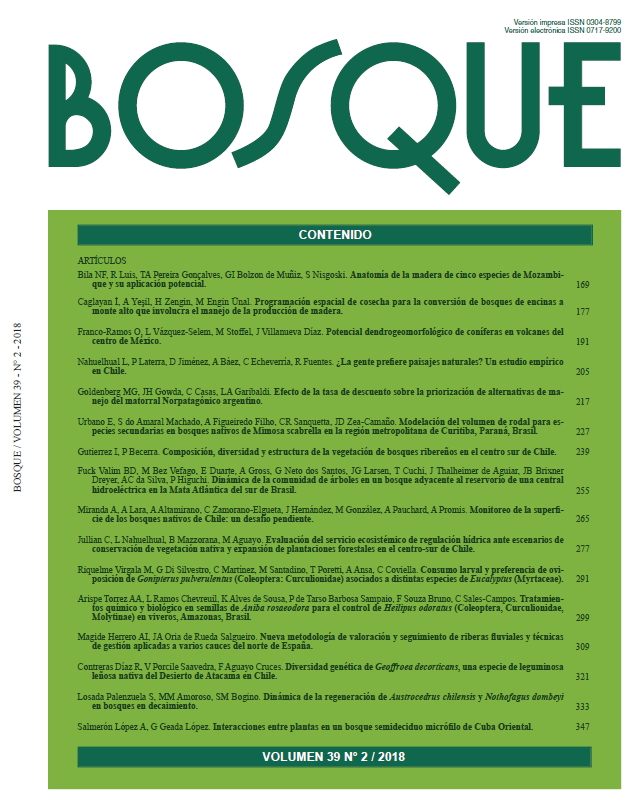Composition, diversity and vegetation structure of riparian forests in south-central Chile
Main Article Content
Abstract
Riparian forests have been highlighted for their unique biological diversity and high importance in ecosystem services. However, they are also ecosystems threatened by forestry, livestock or agriculture. In Chile, studies evaluating the diversity and structure of riparian forest vegetation contrasting slope forests or other habitats are limited. Therefore, the aims of this study were: (1) to compare the composition and diversity of vascular plant species; (2) to compare tree species size structure; and (3) to compare the vertical stratification of plant communities between riparian forests and slope forests. Six southern Chilean watersheds (35-38° S) were studied, sampling the vegetation in plots of 40 m2. In each watershed, 10 plots were located in riparian forests and 10 in slope forests, on both sides of each river. We found important differences in species composition between the two forest types. In the riparian forest we found a higher diversity of tree and climbing species, higher diversity and cover of native species, higher density of tree species in adult state and higher cover of the strata 1-5 m. In the slope forest we found a larger richness and cover of exotic species, higher regeneration density and higher cover of strata < 1 m and > 5 m. Results can be related to the higher moisture of riparian forests, showing the particularity of riparian forests regarding species composition, diversity and structure, compared to other habitats.

